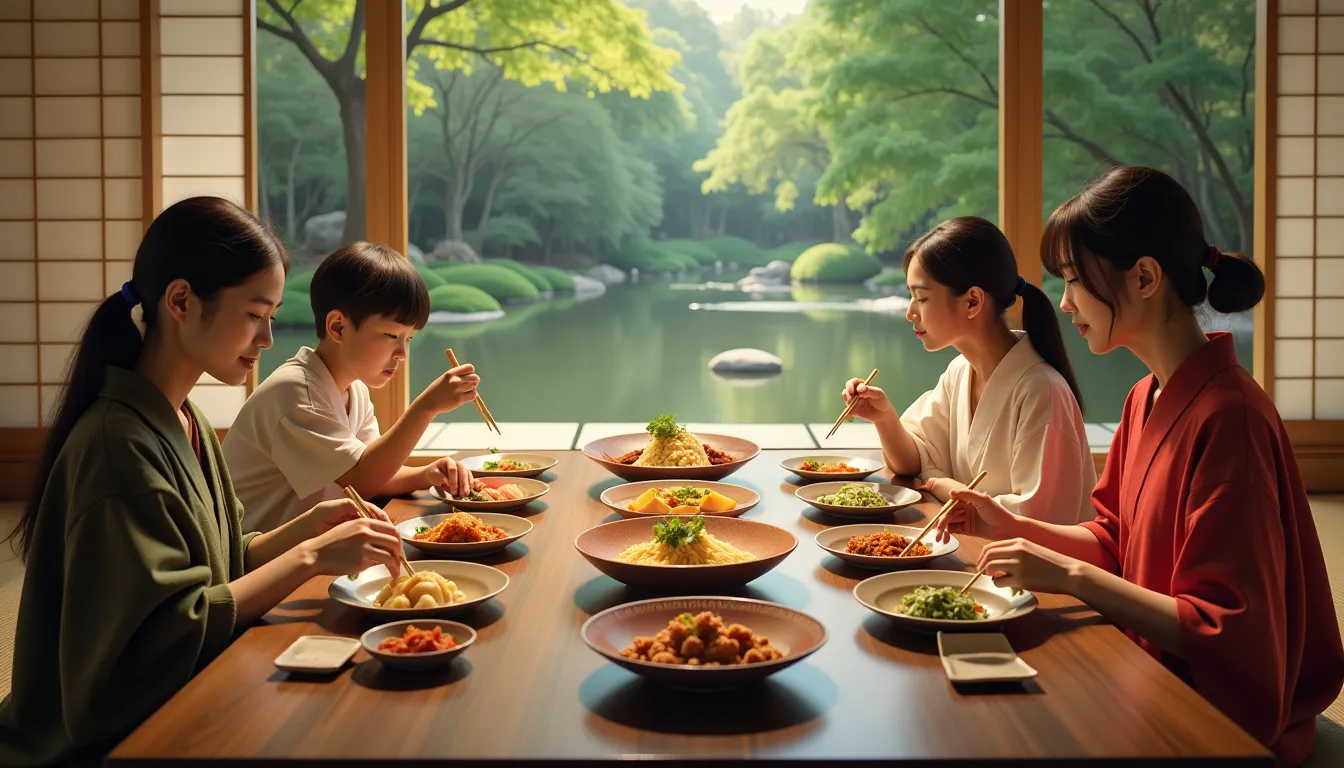Have you ever wondered why the Japanese seem to maintain such healthy weights despite their love for rice and noodles? Let’s uncover the secrets of Japan’s eating habits that not only keep waistlines trim but also promote overall well-being. The answer lies in a fascinating blend of cultural practices and mindful eating techniques that have been perfected over generations.
The Art of Hara Hachi Bu: Eating Until 80% Full
At the heart of Japanese eating habits is the concept of “hara hachi bu” (腹八分目), which translates to “eat until you’re 80% full.” This ancient Okinawan practice has been linked to longevity and weight management. Dr. Akira Tanaka, a nutritionist at Tokyo Health Center, explains, “By stopping before you feel completely full, you give your body time to register satiety, preventing overeating and promoting better digestion.”
Slow Eating: A Cultural Cornerstone
The Japanese approach to meals is akin to a well-choreographed dance – slow, deliberate, and appreciative. This isn’t just about savoring flavors; it’s a powerful weight management tool. Studies show it takes about 20 minutes for the brain to register fullness. By eating slowly, Japanese people naturally consume fewer calories before feeling satisfied.
The Chopstick Effect: Smaller Bites, Better Digestion
Chopsticks aren’t just a cultural icon; they’re a secret weapon in portion control. Using chopsticks naturally leads to smaller bites and slower eating. This simple tool acts like a built-in speed bump for your meals, forcing you to take your time and chew thoroughly, aiding digestion and nutrient absorption.
Mindful Presentation: Eating with Your Eyes
Japanese cuisine is renowned for its beautiful presentation. This isn’t just for aesthetics – it’s part of the mindful eating experience. When food looks appealing, we tend to eat more slowly and mindfully. As the saying goes, “we eat first with our eyes.” This visual appreciation contributes to feeling satisfied with smaller portions.
The Power of Variety: Small Portions, Big Satisfaction
A typical Japanese meal consists of several small dishes, each with different flavors and textures. This variety tricks the brain into feeling more satisfied, even with smaller overall portions. It’s like giving your taste buds a flavor adventure in every meal, leaving you feeling content without overeating.
Nutrient-Dense Foods: Feeling Full on Less
The Japanese diet is rich in nutrient-dense, low-calorie foods like vegetables, fish, and fermented products. These foods provide satiety without excess calories. In fact, many have discovered that incorporating rice into their diet can lead to significant weight loss when combined with these eating habits.
Tea Time: The Natural Appetite Suppressant
Green tea, a staple in Japanese culture, is more than just a beverage. It’s a natural appetite suppressant and metabolism booster. Drinking tea throughout the day helps curb unnecessary snacking and supports weight management.
Embracing the Japanese Way: Practical Tips
- Use smaller plates to naturally reduce portion sizes
- Chew each bite at least 20 times before swallowing
- Put your utensils down between bites to slow your pace
- Try incorporating more Japanese-inspired foods into your diet for better health outcomes
The Cultural Connection: More Than Just Food
These eating habits are deeply ingrained in Japanese culture, reflecting values of mindfulness and appreciation. As you explore Japan’s rich cultural landscape, you’ll find that these practices extend beyond just food, influencing many aspects of daily life.
A Lesson in Balance: The Takeaway
The Japanese approach to eating is a beautiful balance of enjoyment and health. It’s not about strict diets or deprivation; it’s about mindful, balanced eating. By adopting some of these practices, we can learn to nourish our bodies more effectively and find greater satisfaction in our meals.
How can we bring more mindfulness to our eating habits? Perhaps it’s time to slow down, savor each bite, and listen to our bodies. After all, the path to better health might just be at the end of your chopsticks.
